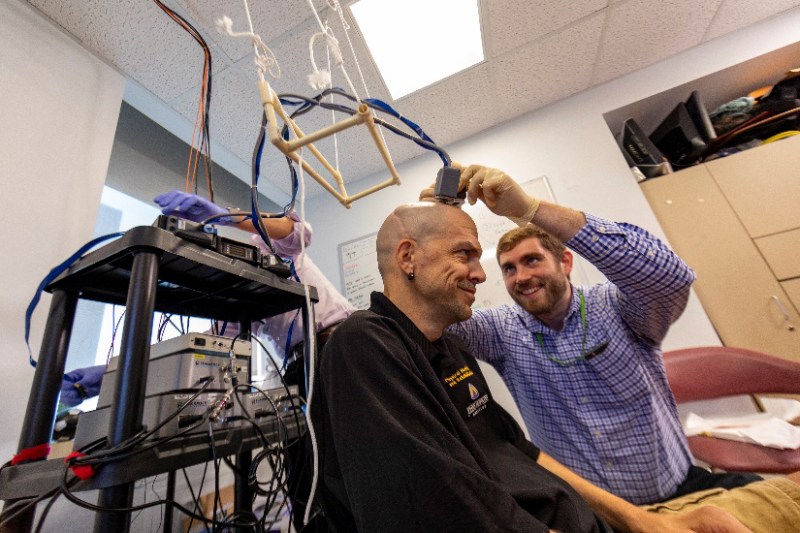Thirty years ago, [Robert “Buz” Chmielewski] suffered a surfing accident as a teenager. This left him as a quadriplegic due to a C6 spinal cord injury. After becoming a participant in a brain-computer interface study at Johns Hopkins, he was recently able to feed himself through the use of prosthetic arms. The most remarkable thing about these prosthetic arms is primarily the neural link with [Buz’s] brain, which allows him to not only control the artificial arms, but also feel what they are touching, due to a closed-loop system which transfers limb sensory input to the patient’s brain.
The prosthetic limb in question is the Modular Prosthetic Limb (MPL) from Johns Hopkins Applied Physics Laboratory (APL). The Johns Hopkins Medicine Brain-Computer Interface study began a year ago, when [Buz] had six microelectrode arrays (MEA) implanted into his brain: half in the motor cortex and half in the sensory cortex. During the following months, the study focused on using the signals from the first set of arrays to control actuators, such as the MPL. The second set of arrays was used to study how the sensory cortex had to be stimulated to allow a patient to feel the artificial limb much as one feels a biological limb.
What makes this study so interesting is not only the closed-loop approach which provides the patient with feedback on the position and pressure on the prosthetic, but also that it involves both hemispheres of the brain. As a result, after only a year of the study, [Buz] was able to use two of the MPLs simultaneously to feed himself, which is a delicate and complicated tasks.
In the video embedded after the break one can see a comparison of [Buz] at the beginning of the study and today, as he manages to handle cutlery and eat cake, without assistance.
[Thanks for the tip, Qes]















What is the resolution of the MEAs, do they ever fail over time and is there any way to upgrade them without doing additional surgery? Does the body react to them at all as foreign entities?
That man is controlling robotic arms using wires going into his brain. HOW. FREAKING. COOL. is that!
Real-life Deus Ex is going to be so cool.
very cool.
This is awesome. I am not sure that I would be eager to allow a system that includes an e-stop to bring a fork near my face though :)
You want the version without the emergency stop?
https://www.youtube.com/watch?v=UwahG1s4dqI
He’s got more control over those arms than the person holding the camera has over theirs. ;)
Being from the field, I can only say Buz is the coolest dude around. He mostly participates to help future generations, he’s not really motivated by the benefit to him, which is slim, since he retains some autonomy through traditional interfaces.
The issue with all the prosthesis is that they don’t last long, the electrodes are being recognized as foreign and start to degrade and it usually only works for people who don’t need it in the strict sense. Elon Musks Neuralink has a very nice approach to get around the issues with scar formation but we’re still a long long distance off being able to read the mind of somebody.
Indeed, finding a solution that’s biostable and can be left inside the brain for decades without significantly degrading in performance, while also providing the kind of resolution that would be needed for more than just a high-level overview of what thousands of neurons are doing, all of that is more than just a daunting task. In that regard it is already quite amazing what’s possible at this point.
When I wrote about Musk’s Neuralink last year, I also touched on how incredible his claims were of ‘reading minds’ and ‘linking human with artificial intelligence’ are. It’s often good to see what the real ‘state of the art’ is in this area.
When it comes to Neuralink, however, one could think that their method of inserting the contacts might offer benefits over current approaches.Worst case, Neuralink’s efforts in the short term may mean a bump in resolution for the sensor arrays and less discomfort for the test subjects.